Czechoslovakian wolfdog: history of origin, features of character and content
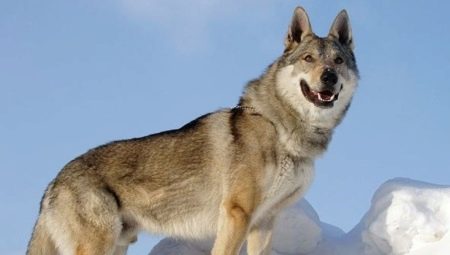
If you want to get a devoted, determined friend and at the same time test yourself, your patience and self-control, strength of character, then it is difficult to find a better option than a Czech wolf puppy. Years of hard work will pay off with interest, and you will get a handsome man with a muscular, toned body, strong and impetuous, with an unusual and penetrating look of inquisitive yellow eyes.
Wise nature has taken care to preserve in the breed an unquenchable independence that requires mutual respect. Treat your pet as a person, and you will experience true pleasure from interacting with a real friend.
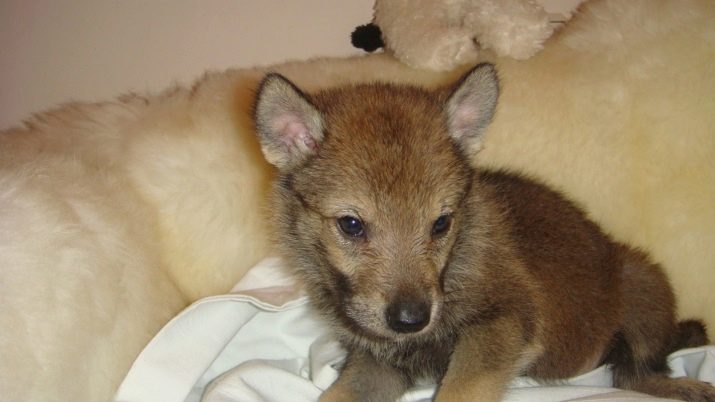
Origin story
The now famous Czechoslovakian wolfdog is called differently: the Czech wolfdog (wolfdog), the wolfhund. Less often - by a wolf, that is, an animal obtained from a dog and a wolf.
The emergence of such a hybrid, possessing the best qualities of a wild animal and a domestic dog, is a task with a long and interesting history. It is known that wolf dogs existed in antiquity, as evidenced by archaeological measurements of animal remains, which are thousands of years old. Most likely, such a crossover occurred involuntarily, as a result of natural curiosities.
The first targeted experiments in breeding wolf dogs were carried out in the XIV century by German breeders. Moreover, wild animals interbred with different breeds of dogs, for example, with poodles. The experiment, oddly enough, was crowned with relative success - about 200 puppies were born.
Nevertheless, all the puppies inherited mainly the "wild" dominant, showing distrust, aggression and did not respond well to training.For obvious reasons, the experiment did not receive its development.
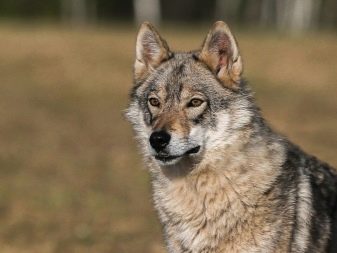
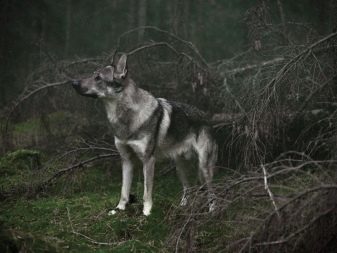
In 1766, now in England, scientists attempted to cross a wolf and a shepherd dog. The first unique litter (9 puppies) was given the name "Pomor dog". Some of the puppies were bought by the English nobility, the other entered the menageries.
A more successful attempt was the work of the Dutch breeder Lander Sarlos, who decided to create a cross between a she-wolf and a German shepherd. The scientist's persistent breeding activity lasted from 1930 and was crowned with success in 1975 - the breed was recognized by the Dutch club, and in 1990 received international recognition.
The Dutch Wolfhund is extremely wolf-like. It is a breed with a strong gregarious instinct, distrustful, loving space, resourceful in attack and always aiming to win. Wolfhund training is difficult.
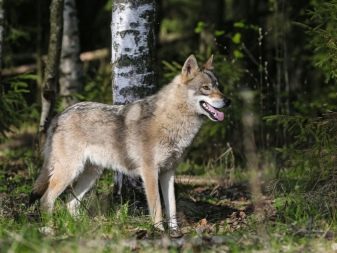
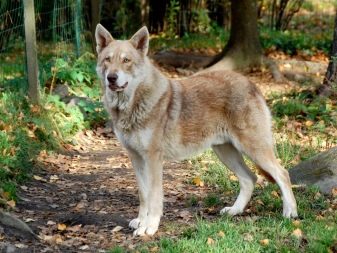

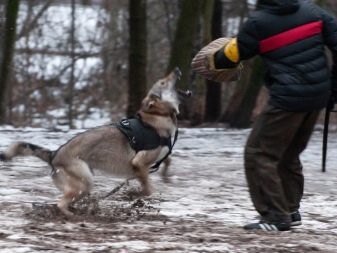
The Czech wolfdog is one of the best representatives of the wolfdog. Pets of the Czech breeder Karel Hartl were released in 1955, during the crossing of specially selected specimens of German shepherds and Carpathian wolves. The offspring turned out to be suitable for subsequent reproduction. The most persistent breeding activity of the scientist lasted 10 years, and the specimens obtained satisfied the main qualities of a military dog.
Wolfdogs have been used to carry out the border service since 1965, but the standard for the breed was adopted only in 1998 - the Czechs were in no hurry to advertise the new breed of wolf dogs.
Basically Czech Wolfhund sociable, extremely mobile, hardy, with excellent reaction, fearless.
The animal is obedient, but has no inclination towards complete obedience. Perfectly navigates the terrain, does not bark (howls). The breed is universal - it can be used for guarding and as a companion dog.

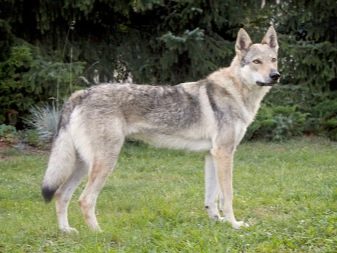
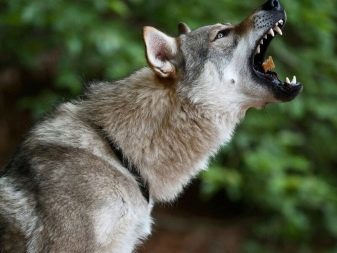
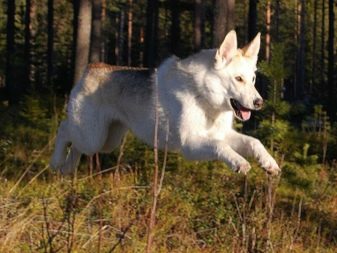
In domestic practice, the Perm wolf-dogs, obtained by order of the government, gained fame. Domestic breeders managed to naturally mate a she-wolf and a male German shepherd. The resulting offspring turned out to be successful, because his further socialization was productive... Today the breed is successfully used in various law enforcement agencies of the Russian Federation.
The first wolfhund nursery in Russia is the nursery Y. Ivanovich (St. Petersburg), which successfully crossed the Canadian wolf and the Alaskan malamute.
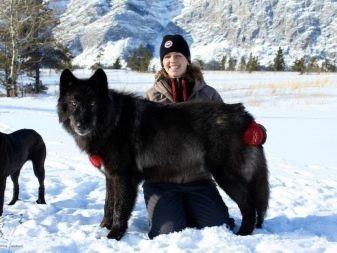
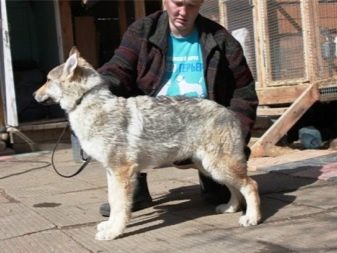
Description
The Czech wolfdog has remarkable characteristics.
- Typical weight males start from 26-28 kg. Bitches weigh less - 20-22 kg. The final weight limits of the breed are not fixed by the standard.
- Dimensions at the withers in males 65–67 cm, in bitches 60–62 cm. The minimum limits of the standard are indicated. In other words, the parameters of an adult Czechoslovakian wolfdog may well exceed these dimensions.
- The breed is characterized by a zonal type of color, with gray, silvery, yellowish-gray or reddish shades. A characteristic light "mask" stands out on the dogs' face. The inner side of the neck and chest are light-colored.
- Average dog lives for about 13-18 years.
- Of the character traits of the wolfdog, the following are distinguished: striving for independence, loyalty and devotion to the owner. The breed is resolute, hardy and physically well-developed.
- The best qualities wolfdogs are in harmony with high intelligence and a tendency to independent, instantaneous actions. For example, a wolfdog is always ready to help a drowning person even without the appropriate command from the owner.
- The limits of the breed's guard-and-sentry inclinations are endless, Wolfdog is a born and loyal guard of any object (from an apartment to slippers).
- Grip among wolf dogs is phenomenal, the force of their bite is several times greater than the force of any domesticated brethren.
- Smell Wolfhounds are naturally strong. They are able to smell subtle odors over great distances. No wonder wolves can distinguish a healthy person from a cancer patient by the smell of blood.
- High level of psychological stamina Wolfdogs determines their quick adaptation to new conditions. In confined spaces, the animal becomes aggressive.
There are legends about the power potential and endurance of Wolfhuns, they are truly universal: they can easily overcome long distances, are able to drag a sled and immediately, without a doubt, rush into the water to save a drowning man. Wolfdogs are also good for hunting, because they can track the animal by smells even in the dark.
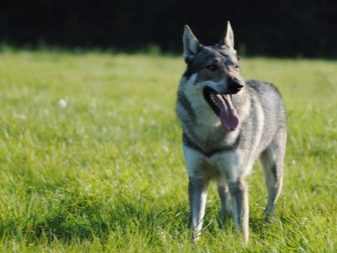
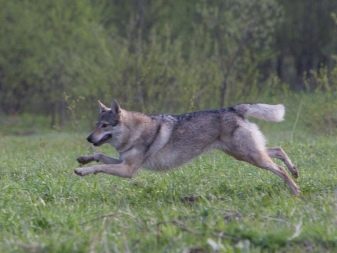
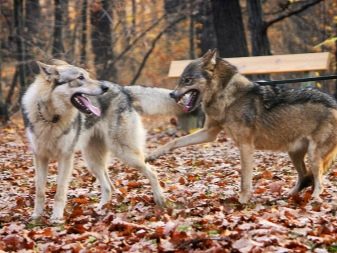
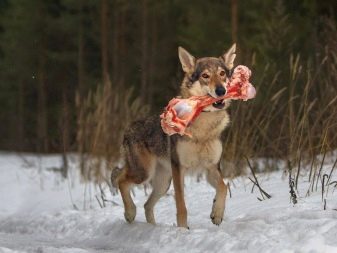
The following officially recognized facts are indicative.
- Unusually high endurance... Vlchak can easily walk a distance of 100 km at a speed of up to 12 km / h, without signs of fatigue at the end of the route. The offer to continue the race will be accepted with passion.
- Great strength. Two dogs, even at the age of 12, harnessed to a sled, will easily carry their owner.
- The specific, wolfish move is striking in its lightness... The movement is harmonious, with wide strides. Most wolves are amblers (when running, they rearrange their one-sided paws).
- Wolfdog is not able to bark - he howls. At the same time, it has the widest range of ways of self-expression - rich body language, diverse techniques of growling, whimpering and, less often, grunting.
It is noteworthy that cowardice and excessive aggressiveness are significant grounds for disqualifying a wolfdog.
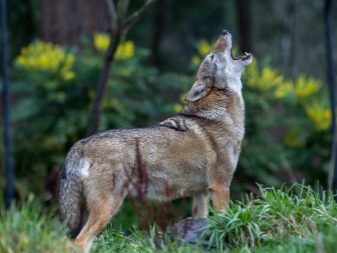
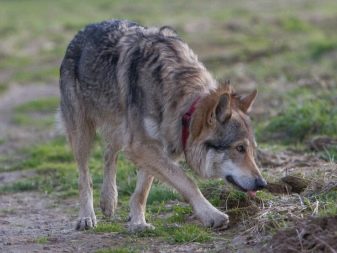
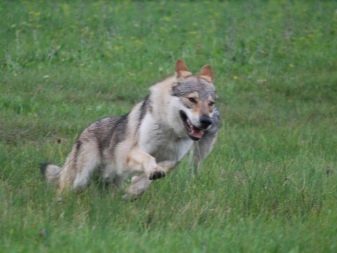
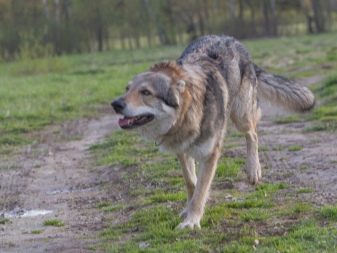
Character
Czech wolves inherited from their ancestors a tendency to lead a nocturnal lifestyle. They hardly recognize the dominance of the owner and are less controllable compared to other breeds. That is why they require professional, careful training from an early age. Only in this case they are firmly attached to the owner, the change of which is almost impossible.
In addition, Wolfdogs are extremely distrustful of strangers, and when a new family member appears, they get used to it for a long time. It often takes years.
Czech wolfdogs treat children differently. Sometimes they are extremely loyal, but they can also be irritable towards them if the child is overly intrusive. Therefore, it is better to keep the dog in families where children are over 10 years old.
The behavior of wolves with other dogs can be aggressive, but they are able to get along in their dominant role. Taking the top position in the hierarchy is relevant for them. It is for this reason that experienced professionals usually keep them with dogs of the opposite sex.
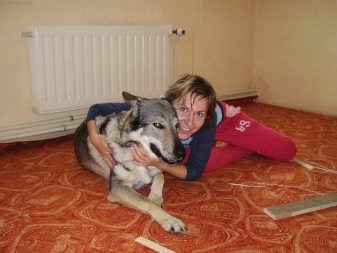

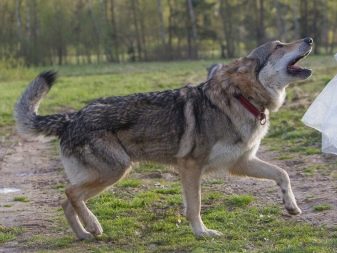

As natural born hunters, wolf dogs tend to hunt for cats, squirrels, rats and other animals. Individual specimens may well be dangerous for their good "neighbors" with whom they have lived for a long time. One must be prepared for such breed characteristics and try to minimize the potentially irritating factors.
Wolfdogs have a unique character, which makes the breed special, unlike either dogs or wolves. They are very loyal. Animals consider the flock their priority and are ready to sacrifice their lives for the sake of their fellows.
They are bold. In a fight, the wolf, as a rule, does not attach importance to the size of the enemy or the number of attackers and gets involved in the battle with all the ferocity inherent in a wild ancestor.
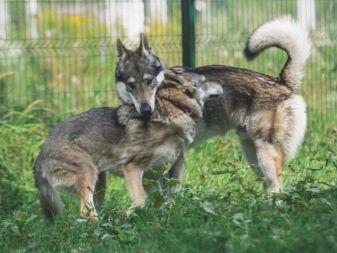
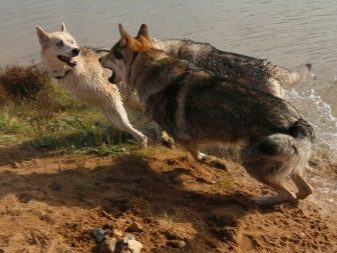
Nature has endowed wolves with the ability to remain cool in the most extreme situations, which largely contributes to making independent decisions in the absence of the owner.
The dog's temperament is lively and impetuous, with instant reaction. A vigilant and reliable guard, the wolfdog guards objects until the owner's direct instructions. In this he is helped by an innate distrust of outsiders. Wolfhund should not be bribed by strangers with any delicacies or won over in other ways. The dog is always alert and alert, constantly monitoring the situation and environment.
Interesting that Unlike Russian wolf dogs, their Czech brethren get along more easily with pets and even cats.
Wolfdogs appreciate attention from a person and accept affection.But if the dog feels that the owner is busy, then he will never impose his society, he will wait. Such natural tact of the animal conquers. Wolfdogs are observant and, as excellent psychologists, can “read” by the face and gestures, perfectly understanding the mood of the owner.
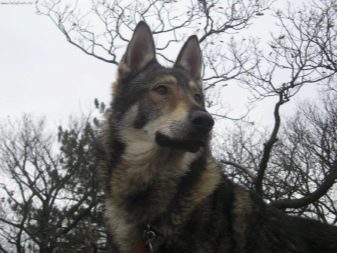
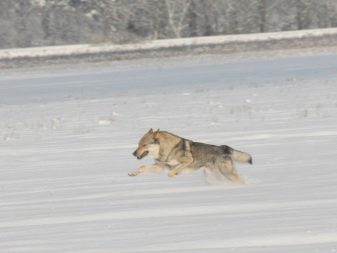
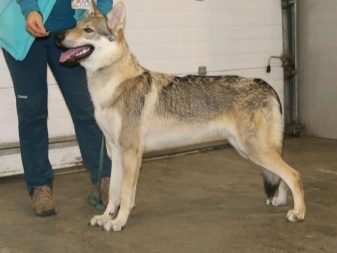
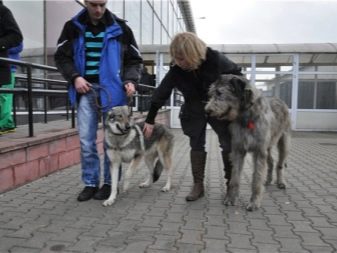
Pros and cons of the breed
The main disadvantage of the breed is the low level of controllability. Breeders and dog handlers never managed to bring the breed to complete obedience. Given the strength and size of the animal, this factor requires special attention.
We will also refer to the disadvantages of the breed. natural independence.
Experts also note that with a long absence of the owner, the wolf dog usually shows considerable aggressiveness.
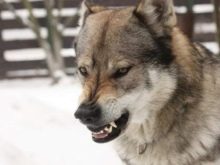
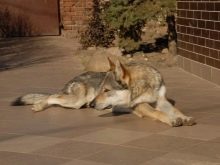
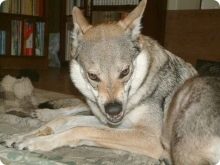
The advantages of the breed are obvious:
- devotion, a pronounced tendency to self-sacrifice for the sake of the life of the owner;
- high intelligence and the ability to instantly respond to changes in the environment;
- decisiveness, high physical condition, excellent security and sentry inclinations;
- complete incorruptibility;
- tactful sociability.
Only an experienced dog handler, a clear leader with a strong character, can handle an independent and strong-minded pet.
That is why amateurs from cynology should not get wolves. Keeping wolf dogs in families with children is not recommended.
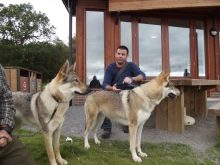

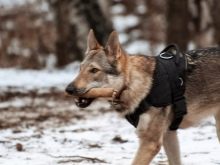
Content
The Czechoslovakian wolfdog is not picky about keeping, able to withstand heat and extremely low temperatures. For this reason, they are most often kept outdoors. It is contraindicated to keep the wolfdog on a chain, but it should be kept in a special enclosure with a reliable fence. The lock will not hurt either - a sharp-witted wolf-dog can easily take possession of simple bolts, and even more so, he is able to disassemble wooden barriers.
The aviary is equipped with a booth, the entrance to which is usually covered with compacted material that protects the "house" in windy and rainy weather. Wolfdogs are extremely inquisitive and are not averse to tasting everything. It is useless to scold him for the gnawed furniture.
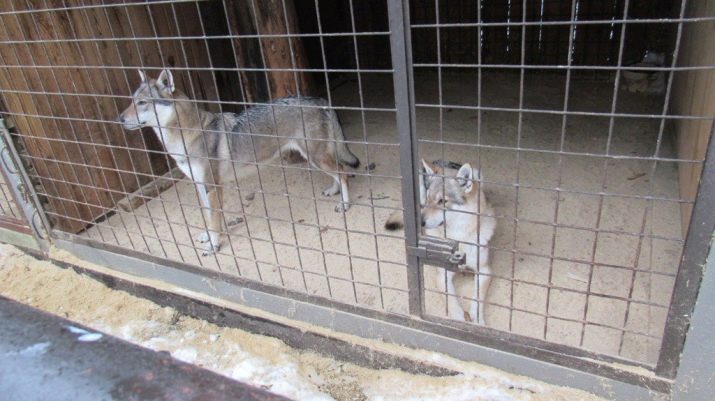
The grooming of a decent dog must be appropriate, especially in terms of grooming, management and control. Compliance with a number of simple rules in the process of caring for a dog is mandatory.
- The regularity of long walks - at least twice a day (muzzled). Particular attention should be paid to the socialization of young animals. For this purpose, walks in crowded places are useful. The puppy needs to get used to street sounds and human behavior.
- Bathing not particularly relevant for a wolf dog, since its coat is not particularly prone to dirt. The dog is not afraid of water and bathes with pleasure.
- Systematically - at least once a month in winter and once every couple of weeks in summer - the dog needs clean your ears.
- Twice a year, the animal sheds, molting occurs extremely abundantly - almost the entire layer of the undercoat falls out. For a qualitative improvement and acceleration of wool replacement, it is recommended to carry out water treatments, at the end of which, using a compressor, the dog's coat is thoroughly blown with warm air. This helps to eliminate falling hairs, prevents the formation of tangles and various skin irritations.
- Claw cutting - the procedure is feasible for the dog himself. For this, it is important to provide him with quality walking on various surfaces and with various obstacles. For home conditions, assistance to the dog in shortening the claws will be required, for which special forceps are used.
- Teeth wolf dogs and especially canines require regular cleaning, which is usually done in veterinary clinics.
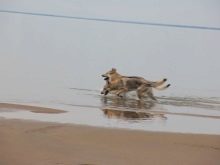
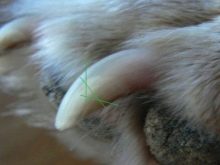
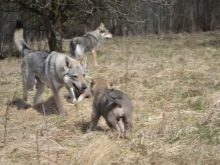
Having received the young in the nursery, you should remember what and how they fed them - the feeding strategy must be preserved. This contributes to better adaptation of the puppy to new, unusual conditions for him. Further, one of two feeding routes is used.
- Natural option provides for a diet rich in meat, with the inclusion of curd products, eggs, kefirs, boiled offal and low-fat seafood.
- Ready meal option using industrial feed (premium or super-premium level). Here there is a more balanced menu that saturates the animal's body with useful substances.
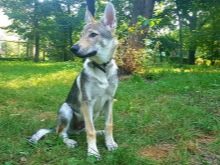
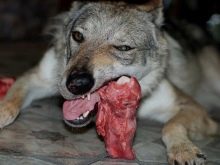

Czech wolfdogs are dogs with wolf health, and thanks to selection work, they do not develop hereditary diseases. Nevertheless, the "Achilles heel" is present here in the form of a certain tendency in wolves to develop defects (of non-hereditary nature) in the musculoskeletal system. Often they have an incorrect formation of the hip joints, which develops on the basis of a number of factors:
- nutritional errors;
- the diet is poor in calcium;
- lack of physical activity;
- lack of daily walks;
- poor-quality healing of injuries;
- sliding floor covering.
The specified disease is quite curable, but the treatment is lengthy, requiring a lot of patience from the owner and possible financial costs.

Vaccinations are relevant because they really protect pets from unpleasant pathologies. The vaccination schedule for wolves is similar to the schedule for German shepherds:
- vaccinate a pet at the age of one month;
- after 34 weeks after the first vaccination;
- at about one year of age.
Then the wolf is vaccinated once a year. Give your pet anthelmintic drugs 7-10 days before vaccination.

Education and training
It takes a lot of effort, time, patience and perseverance to raise a true friend - a difficult breed. An emotional, naturally intelligent dog will persistently and ingeniously make attempts to outwit the owner in order to get away from training. Monotony quickly bores her. It is important to show perseverance and firmness, not giving the pet the opportunity to dictate its terms.
In this sense, the following recommendations are relevant.
- You should not raise your voice to the pet, it is important to keep yourself in hand under any circumstances.
- Your social role in the pair is the leader of the pack. Wolfdogs feel the weakness of the owner instantly, and this is fraught with loss of confidence in the dog. Remember that the Wolfdog is a person who demands worthy of respect. Physical coercion, and even more impact, is excluded. Otherwise, the dog will become aggressive.
- Pet obedience is reinforced by rewards and not only in the form of treats. A quick-witted dog surprisingly subtly perceives praise in words, intonations and movements of the owner.
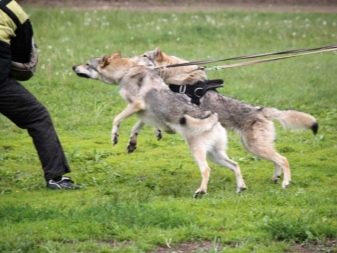
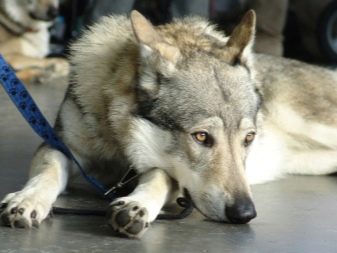
For the Czechoslovakian wolfdog, see below.






































